Aquariums 101: Tanks and Stands

This is the first of several guides I’ll be sharing with new aquarists looking to set up their very first fish tank! This first guide covers choosing the right aquarium tanks, the tank size, and the importance of fish tank stands.
And from there, in future guides we will branch out into aquarium technology, how to aquascape your tank, cycling an aquarium, choosing your fish, caring for live plants, feeding your fish, and dealing with the inevitable disease issues that arise in all freshwater and saltwater aquariums.
You’ll have everything you need here to provide a long, healthy life for your new pets! Fish keeping is easier than you think and I’m happy to show you just how straightforward it can be. So let’s start with the bare bones basics: fish tanks and aquarium stands!
Why is the Size of Aquarium Tanks Important for Fishkeeping?
Choosing the right tank size is one of the most important decisions you’re going to make as a fish keeper. The aquarium you choose will determine how many fish you can keep, what kind of fish you can keep together, how much maintenance time you’ll be spending on it, and the size and expense of the added equipment like heaters, filters, and aquarium lighting.
Choosing the Right Fish Tank Size for my Aquarium
Some aquarists prefer starting with a five gallon tank while others might plunge right in with a 55 gallon living room fixture. And believe it or not both are entirely doable for a beginner aquarist! So which tank size is just right for you?
The questions you need to ask yourself include: “how many pet fish do I want to keep? And what kind? Do I want large fish or small fish? A school of them or a single Betta? Marine fish? Community fish? Cichlids?” There are so many options!
Do you mind doing water changes of 10-20 gallons on a 55 gallon tank biweekly? This lets you keep large cichlids and other personable fish. Or would you find it easier to remove a few scoops of water from a desktop to be replaced and done with in just five minutes?
Tank size is also a matter of budget since larger tanks plus their associated equipment cost more (but not as much as you’d expect) than smaller ones. And on that note, let’s talk a bit about the differences between large vs small aquariums.

Large vs. Small Aquariums
Starting with a Small Aquarium: Pros and Cons
Small fish tanks seem intuitive for beginning fishkeepers: after all, a large aquarium must be more difficult, right? After all, there’s more to manage…That’s actually not as true as you might expect but it’s not untrue, either.
A small fish tank requires less maintenance, that’s for sure! A water change can be done in just a few minutes with a cup or bowl if the tank is 5 gallons or under. And for a 10 to 20 gallon aquarium, a siphon hose and bucket will allow you to complete the job in half an hour or so.
Small fish tanks also have smaller start-up costs compared to larger tanks. A small 10 gallon tank typically runs $20 at most pet stores. Meanwhile, a 55 gallon tank can be closer to $80. The lighting, filters, and heater all also need to be larger, which means they both cost more and use more power when running. You should also think about gravel and other aquascaping costs as well, in addition to how you’ll stock the tank.
But small aquariums do have some drawbacks to consider. The most obvious one is that they hold fewer fish. If you crave diversity you’ll quickly run into the limits of a 1 to 10 gallon aquarium. The one inch per gallon rule of fishkeeping isn’t perfect. But for small fish it works well enough to give you an idea of what a safe carrying capacity is for most tanks.
Additionally, for those interested in marine setups, a nano reef tank presents its own unique challenges, as maintaining stable water conditions and suitable habitats for corals and marine invertebrates in such a small volume can be more demanding.
And a lesser known drawback of smaller aquariums is that they are much more prone to drastic changes in water parameters. If a heater goes out, a smaller body of water cools faster than a larger one. If you overfeed or a fish dies unexpectedly, ammonia concentrations rise faster in a smaller aquarium than a larger one. You can think of your aquarium water as a potential buffer against issues that arise. The larger the tank the more buffering capacity it has before something becomes a problem for your fish and other pets.
Starting with a Large Aquarium: Pros and Cons
Larger tanks are more or less the opposite of smaller ones when it comes to benefits and drawbacks. But one of the major pros of a large tank is that the costs don’t scale linearly with size. Meaning a 10 gallon tank setup isn’t five times cheaper than a 55 gallon tank setup. In fact, if you are savvy when you go to the shop you might be able to get a 55 gallon tank set up and running for only twice or three times the cost of a 10 gallon tank!
Larger tanks give you the option to keep many more kinds of fish as well. You can still keep Neon Tetras, Platies, and other small community fish, if you like. In fact, you can keep dozens of them! But you might also try keeping Angelfish and other medium sized to large fish as well. I usually recommend 55 gallons as a good maximum tank size for beginners because they are easy to find, provide enough space for 90% of the fish you’ll find in a local pet store, and it’s easy to find affordable hoods, aquarium lighting, fish tank stands, and other equipment sized for them. Tanks 75 gallons and larger tend to be significantly more expensive to set up since fewer of them are sold yearly.
Lastly, you have the increased buffering capacity that large aquariums provide. A large volume of water resists changes on parameters like chemistry and temperature better than smaller ones. This provides a more stable environment for your fish, which all animals prefer.

Types of Fish Tanks
When shopping for an aquarium you’ll need to be aware of more than the size of the tank. The material is also a very important thing to consider because each one has several advantages and disadvantages to offer fish keepers. Most people immediately think of glass aquariums when they get started; but what about the other options out there?
Glass Aquariums
Glass fish tanks are the gold standard for the majority of aquarists and for several good reasons! Glass is the most durable material to make aquariums out of. It’s extremely hard and scratch-resistant compared to plastic models, which can scuff easily if you use the wrong algae scrubber. And those scuffs are often permanent! It takes a lot of effort to scratch a glass tank; usually a falling piece of rock or other decor does it but not much else.
Glass fish tanks also remain clear for decades while plastic tanks, including acrylic, tend to yellow over the years if they get exposed to sun. There is a photochemical reaction that occurs due to the UV radiation in sunlight. This causes the plastic panels to permanently lose their clarity over time.
Glass aquariums are also several times cheaper than acrylic tanks of the same volume and a standard design. They have been mass produced for decades so the cheapness of glass plus economics of scale work in their favor. That said, crystal glass aquariums are significantly pricier due to the optical benefits they provide!
Crystal Glass Aquariums
Crystal or starfire glass is a little different from a standard aquarium glass. It uses a low iron formula which significantly improves the clarity of viewing. Regular aquarium glass has a slight greenish hue to it that can detract from professional displays. But crystal glass lives up to its name, allowing 91-95% of incoming visible light to pass through unimpeded, versus 80-90% for a regular tank, depending on the manufacturer and quality of glass.
Crystal glass is usually used in rimless tanks, which have a unique minimalist aesthetic and creates the appearance of a hovering mass of water when done properly! That said, crystal glass is not as shatter-resistant as regular mineral glass, so you’ll need to be careful when aquascaping and moving around the tank. It’s also 2 to 3x more expensive than a standard glass aquarium as well – but visibly better when combined with a good light!
Acrylic Aquariums
Acrylic fish tanks are not as common as glass but are an excellent choice for if you want an alternative that still looks good! Acrylic is commonly used for aquariums that include curves and are built to non-standard configurations since the plastic can be quickly and easily shaped to fit any design.
An Acrylic fish tank has several advantages over glass models. For one, they have superior light transmission; over 90% of light passes through it, giving it a clarity on par with starfire ultra low-iron glass! And unlike glass, acrylic is very resistant to sudden impacts; it won’t shatter the way glass does if it takes a hard knock from falling decorations or a careless mistake while cleaning.
Acrylic tanks are also much lighter; usually 50-60% lighter than a glass aquarium of the same size. This is especially important when you find yourself needing to move the tank. Acrylic is also less heat conductive, meaning it takes less energy for your heater to keep the water warm compared to a glass aquarium.
But acrylic does have some disadvantages. The major issue it faces is that it’s very prone to being scratched. Acrylic is a much softer material than glass; while a falling piece of rock won’t break it, you’ll have a mess of scratches on the struck panel. Even using the wrong cleaning brush can scratch it; you absolutely have to use scrubbers meant for acrylic. Acrylic tanks also cost significantly more than standard mineral glass tanks.
Plastic Aquariums
Plastic aquariums are the final option for first time aquarists. These are desktop models that are usually between 1 to 5 gallons in size. Anything larger is usually built out of glass or acrylic, which are stronger. Plastic aquariums are inexpensive and impact resistant – but also easily scratched, depending on what kind of plastic was used by the manufacturer.
Fish Tank Stands
Once you’ve chosen a fish tank you’ll probably need an aquarium stand to hold it up as well. An aquarium stand is more or less mandatory once you hit aquariums of 10 gallons or more, unless you have a desktop, tabletop, counter space, or other place that can hold the weight of a filled tank with rocks and gravel (depending on the size, they can be 100s of pounds!).
Remember that water weighs about 8 lbs per gallon. This means that an aquarium is a lot heavier than you’d expect it to be given its size. Fortunately it’s easy to find stands for the standard sized fish tanks out there (10, 20 high/long, 29, 30, and 55 gallons). Odd sizes like 40 breeders may require a special order but most pet stores should be able to accommodate you.
Aquarium Stand Materials
As long as you’re buying an aquarium stand rated for a particular volume of water, the material the aquarium stand is made of is mostly irrelevant except for a few key details. Most stands are built from wood, metal, or plastic – or some combination of the three. Aesthetics to match your furniture and price are going to be the primary drivers in your decision here.
Wooden stands tend to be made of stained pine, oak, walnut, or other classically appealing lumbers that complement your decor. Something to consider when buying a wooden stand is how the wood is treated and where. Wood stands are the least water resistant of the materials. And cheap wooden stands for smaller tanks are sometimes made of particle board, which readily rots and warps if moistened – affecting the ability to carry weight. Even if you don’t directly wet it the stand may absorb humidity from the air around the tank over the course of months or years. Treated hardwoods are therefore your best option here and look better as well.
Metal aquarium stands are corrosion-resistant depending on the type of metal used and how it’s coated. Metal offers a different aesthetic but tends to be lighter since it’s much stronger than wood or plastic. Since less metal is used to keep costs down, they usually don’t have an enclosed storage space where you can hide equipment like test kits and canister filters, unlike wood or plastic designs.
Plastic aquarium stands are the least common since it’s the weakest material. But you can sometimes find them for aquariums 10 gallons and under. Plastic is durable, won’t corrode if exposed to water, and inexpensive as well. Plastic can also be molded to fit any shape easily – but it’s not nearly as attractive as wood or metal.FAQs
What Can I Use for an Aquarium Stand?
Your choice of aquarium stand depends on several factors, such as aesthetics and how much weight it needs to bear. Wooden stands tend to be the most aesthetically pleasing, but are less water-resistant than metal or plastic stands. Metal aquarium stands are more resistant to corrosion and can bear a greater amount of weight, while plastic stands offer a light-weight option.
When shopping for an aquarium stand, take into consideration the size and weight of your tank. Decide on the material you want to use – wood, metal, or plastic – as well as what aesthetic appeal it should have. Be sure to buy a stand that will be able to support the full weight of your tank when filled with water.
Can I use a TV stand for an Aquarium?
While it is possible if you know how much weight the TV stand can support, we recommend not using a TV stand for an aquarium. Home TV stands are not designed to support the weight of an aquarium filled with water and rocks or gravel. It is best to purchase an aquarium stand designed specifically for your tank size and weight in order to ensure it will remain stable.
Can I use a Cabinet as a Fish Tank Stand?
Similar to TV stands, we wouldn’t recommend using home furniture. While it is absolutely possible your cabinet can support the weight, it’s better to buy something specifically made for aquariums. Especially considering the water which will inevitably land on the stand during water changes and other maintenance.
Conclusion
We’ve covered a fair amount of ground here. But hopefully you know enough now to make an informed decision on your first home aquarium! Truthfully, there really is no right or wrong choice here; it all depends on what’s best for your needs and budget!
Next, we’ll be talking about the various technological components to an aquarium: the filters, lighting, and other elements that keep your fish healthy and happy!
No comments

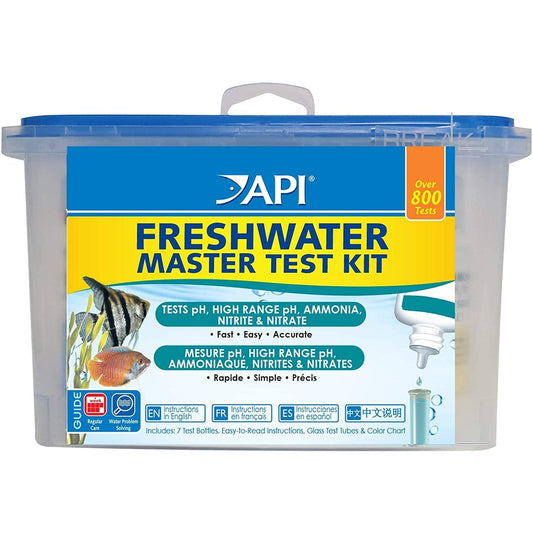
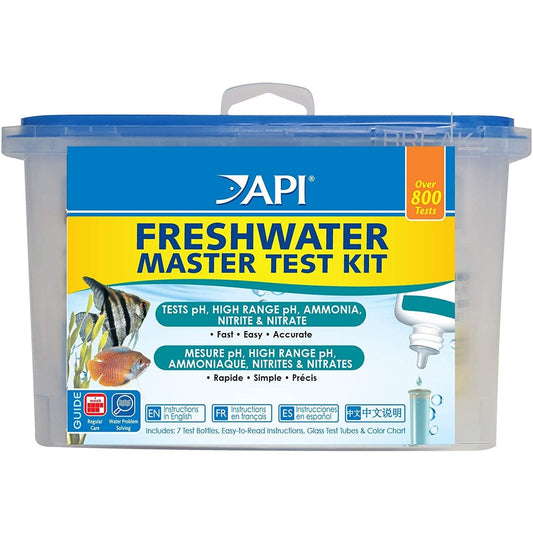
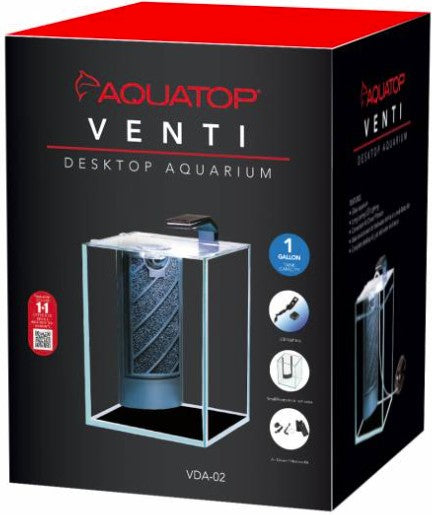



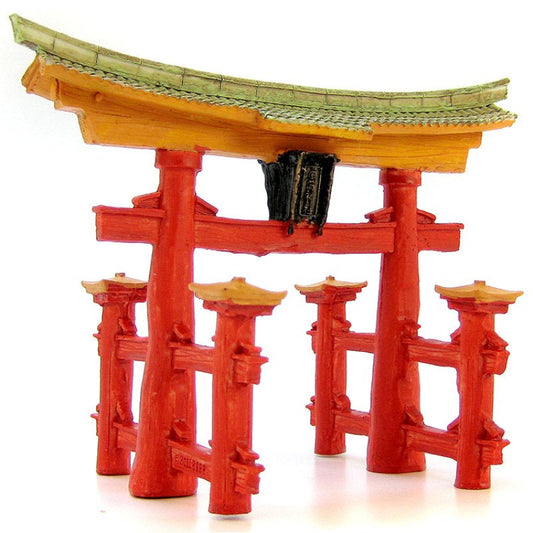

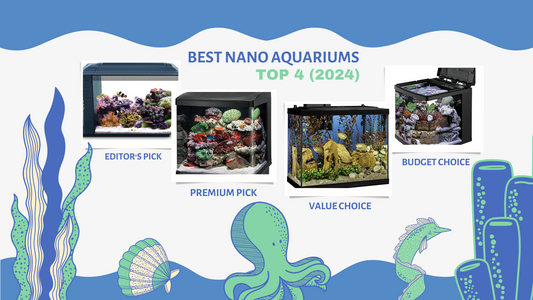
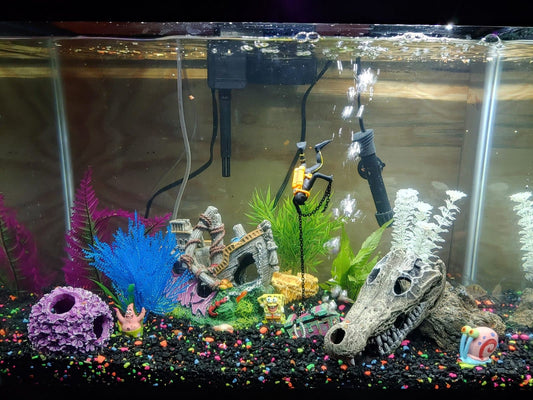


comments